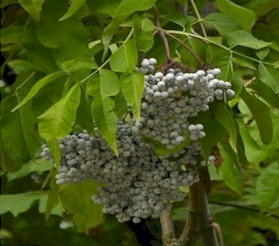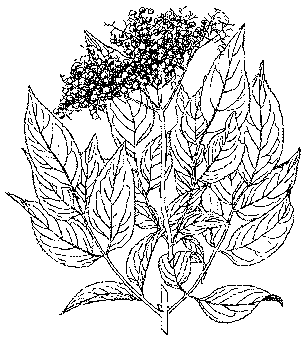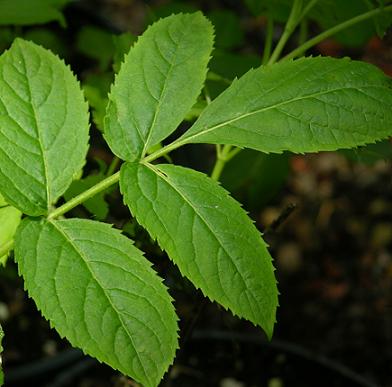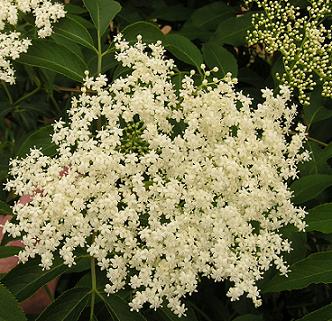|
|
|
Hansen's Northwest Native Plant Database |
|
|
|
Sambucus mexicana (Blue Elderberry)
|
 |
|||||||||||||||||||||||||||||||||
|
Note: Throughout the years I've written short articles for our website's home pages (home pages are the front page of a website) about these plants. They are now included at the bottom of this page, and are illustrated by botanical drawings and paintings, some of which are from books published from 1500 - 1900. |
||||||||||||||||||||||||||||||||||
|
This handsome, deciduous shrub, with its multiple stems, reaches 6-12’ in little time. The bright green leaves grow from stems as pithy as raspberry canes and surround the distinct flat-topped clusters of flowers. Shrubs yield an impressive amount of delectable, blue-black berries with a high vitamin content that are used in pies, wines and preserves. Birds and other wildlife flock to the berries as they ripen. Do take care not to eat the berries uncooked and remember that the roots, leaves and bark contain cyanide and must be avoided. Blue elderberry is generally an interior rather than coastal plant found from Alberta to New Mexico and west to the Pacific Coast (USDA 5-10). It grows well in sun or shade and tolerates a moderately dry site. |
||||||||||||||||||||||||||||||||||


 |
||||||||||||||||||||||||||||||||||
|
||||||||||||||||||||||||||||||||||
|
Photos We Share!
|
||||||||||||||||||||||||||||||||||
|